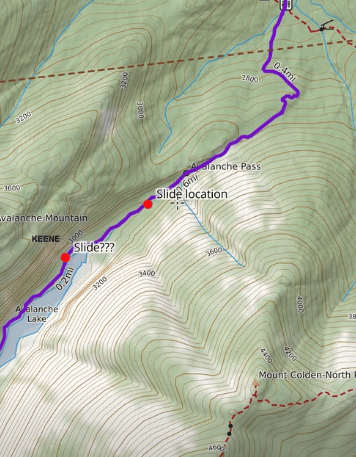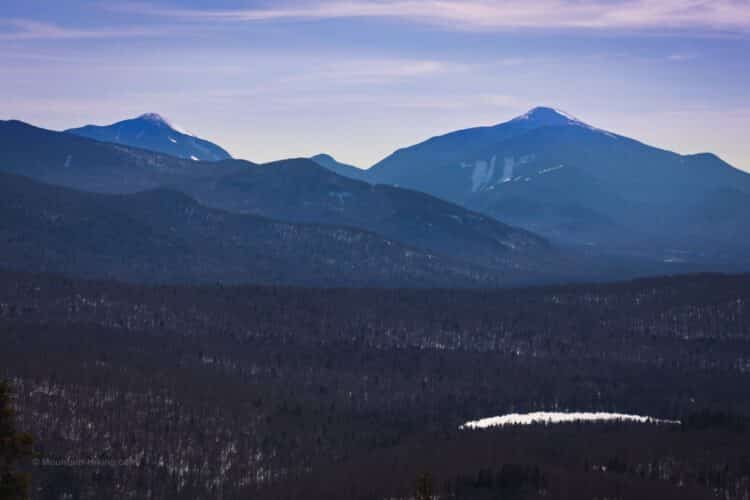After some time of rainfall in mid-July, massive landslides closed and impassable for the popular avalanche passage.
The New York Department of Environmental Protection (DEC) closed the trails indefinitely, while employees assessed the damage and monitoring conditions.
Heavy rains – up to five inches in some areas – triggered multiple mud and rock slides on the peak. On July 13, a major slide ripped from the north of Colden Mountain in northeast of Avalanche Lake, stripped the big trees and left a wide, debris-filled scar on the avalanche pass.
The video released by DEC shows the scale of the destruction. Now a long passage between Adirondack Loj and the icy lake is now buried under tangled trees, rocks and thick mud.
Specifically, the Avalanche Pass Trail remains closed from the intersection with Lake Arnold Trail to the southern end of Avalanche Lake. Closure affects multiple high traffic routes:
-
Direct route from Adirondack Loj to Cold Lake via Avalanche Pass
-
Loop routes for Algonquin, Colden and Marcy returned via Avalanche Pass
-
Marcy-skylight-Gray loop, cliff and Redfield and Marshall’s method
-
Any hike that relies on the Arnold Trail on the Upper Lake to and from Feldspar Bog
While some of these peaks can still be used as a recurrence, no loop routes including the Avalanche Pass or the Arnold Trail on the Upper Lake are feasible.

Additional tracking corruption
A second slide took place on the southeast side of Colden Mountain, affecting the Feldspar/Arnold Lake Trail. The slide is not that serious, but the trail is still blocked. It may be possible to conduct brief shrubs around the debris, but the conditions are wet, muddy and unstable. It is highly recommended that you be cautious.
“The trail is completely buried under a lot of trees and dirt,” said Sam Fairchild of the Adirondack Mountain Club. Fairchild and other employees are working to make hikers understand and rewire, but there is no timetable for when to reopen the avalanche pass.
https://www.youtube.com/watch?v=zlsgcypv024
Extreme weather patterns
Landslides are not only caused by the rate of rainfall drop. In one example, N.S.n.n.n.n.n., New York, saw 2.5 inches of rain in just 40 minutes. Another area in northern Onida County is 3.25 inches in less than four hours. Suddenly, a large amount of downpours like this became increasingly common throughout the Northeast and around the world, saturating steep hillsides and increasing the risk of slides, flushing and other trail hazards.
Although landslides in the Adirondacks are rare, they are expected to become more frequent as the region experiences the effects of climate change. Warm air can hold more moisture, which can lead to more intense rainfall events. In April 2025 alone, the world saw 41 deadly global landslides, which made people increasingly unstable to the global mountainous areas.
By the way, you might also like…
How to keep updating
DEC urges all hikers Avoid avalanche lake areas Until further notice and exercise caution on all peak trails, especially those who cross streams or steep terrain. Summer is the peak season for Adirondack hiking, and these closures may affect the plans of many.
For updates, alternative route information or inquiries about current conditions, please call the High Peaks Information Center at 518-523-3441 EXT. 121 or access the following resources:
Adirondack Park is huge, and while the Avalanche Pass Trail is closed, there are many other amazing trails and peaks to explore. Check out my list Adirondack Trail Guides.
Read more
Get full access…
Visit now For the full version of this website, and enjoy great supporter benefits: full gallery, full trails, early access to the latest content and more.
Now on the website…
Follow more…
Follow me @totalcatskills Meet content on Instagram for regular hiking Inspo and safe, inclusive communities.







